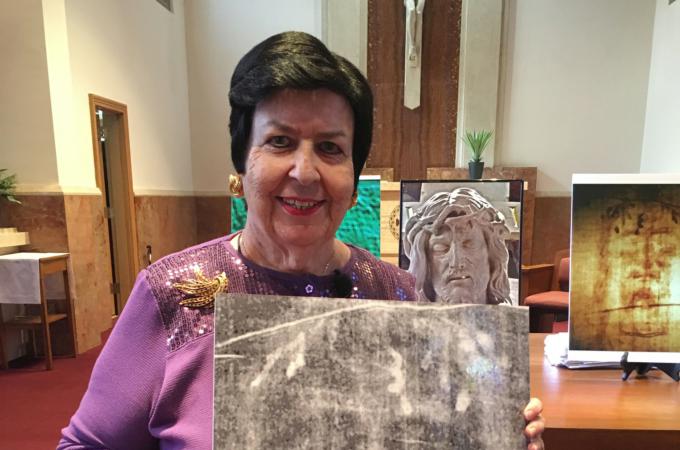Entering the Season of Lent at Youville Place
The season of Lent encourages us to reflect on the symbolic importance of sacrifice. When Christians "give up" things for Lent, whether it's a vice or unhealthy habit like sweets or red meat, they honor the sacrifice made by Jesus during his crucifixion.
At Youville Place, residents entered Lent with a fresh perspective on the symbolic and literal significance of the Crucifixion. Dr. Raymonda Hickey, herself a resident of Youville Place, presented on a topic that has long fascinated her as a scientist and a Catholic: The Shroud of Turin, believed by many to be the burial shroud of Jesus.
Kept in the Cathedral of St. John the Baptist, in Turin, Italy, the Shroud is one of the most studied and controversial artifacts of all time. Is the centuries-old, linen shroud really the burial shroud of Jesus Christ? Is the strikingly realistic image imprinted on the shroud an image of Jesus himself?
Dr. Hickey examined these questions and led discussion with residents at Youville Place, drawing from her medical training, her Catholic faith and her long-standing interest in the Shroud. As a pre-med student at Emmanuel College, she read a book called "A Doctor at Calvary," by Dr. Pierre Barbet, a surgeon who spent 15 years studying it. This ultimately sparked her interest, and later inspired her to create an anatomy and physiology lesson for her public school students. "One has to be careful not to teach religion in a public school," she said, "so my lesson was strictly on the anatomy and physiology of one who is crucified. However, I would always time it so that the lesson was presented just before Passion Week for Christians. My Christian students were able to make the spiritual connections between the science lesson and the Gospel reading, while both Christians and non-Christians found the lesson to be historically interesting."
While science has been able to elucidate a great deal of physical information about the Shroud, the source of the imprinted image of the man remains a baffling mystery. Under X-ray, the image becomes more distinct and strikingly realistic. Blood stains on the shroud, in the area of the man's hands and head, are consistent with the crucifixion account of Jesus, and many think that the image is of Jesus himself. According to Dr. Hickey, "Science says that the image is the result of a 'burst of energy' ... but stops there," says Dr. Hickey. "Christian faith takes this a step further and associates this 'burst of energy' with the Resurrection."
As a resident at Youville, Dr. Hickey serves as eucharistic minister and lector. She was thrilled to be able to share her knowledge of the Shroud with fellow residents. "Lent is a time when Christians reflect on Jesus' crucifixion, his suffering, his love and mercy," she said. "I hope that this presentation provided nutrients for spiritual growth."
- Adam Johnson writes for Youville Assisted Living Residences, member of Covenant Health Systems, a Catholic, multi-institutional health and elder care organization serving New England.



















